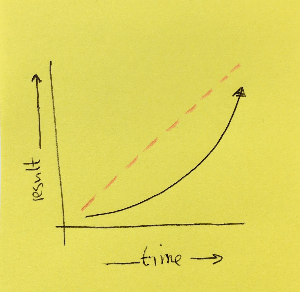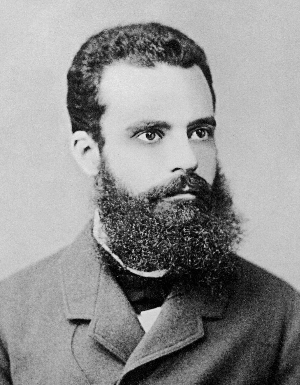The 80/20 rule in studying is what sets smart students apart from regular students. The student who applies the 80/20 rule will be able to study faster, have a better understanding of their book and does all of this in less time.
In this article, we will investigate the 80/20 rule and how you can use this when studying.
The main reason you want to start using the 80/20 rule in your study routine is this. It will save you so much time! This is exactly why I feel this is one of the 5 Study Mindsets I recommend all adult learners have to use. We don’t have a lot of time, so each moment should count!
Let’s have a look at what the 80/20 rule is first…
What does the 80/20 rule mean?
The 80/20 rule, or the Pareto Principle, states that 80% of your efforts lead to 20% of your results, and vice-versa. This means that 80% of your study book gives you 20% of your knowledge and insights. Also, 20% of your book gives you 80% of your knowledge.
The 80/20 rule is also called the Pareto Principle. It is named after the Italian economist Vilfredo Pareto.
He noticed that 80% of all wealth was owned by 20% of the population. Nowadays we call this the 99% I think…
The most important thing you can learn from his findings is this. In nature, there are not really many 50/50 distributions.
There is always an imbalance between input and output.

For example, studying one chapter from the ten chapters in your book doesn’t mean that you know 1/10th! In fact, it may be that you understand perhaps 1 to 5% of your book because it was just an introductory chapter.
This is all because of nature’s imbalance between input and output. The sad thing is that this is not only happening when you study. It happens all around you! The 80/20 rule applies to studying, results at work, and even when cleaning your home.
Want to know a secret?
Most people focus their time and efforts on the 80% that create the 20% of their results. Making the shift to focusing on the 20% that creates 80% of your results literally changes your life. When you do that, you will be able to study faster in less time.
One thing to note… the 80/20 rule doesn’t always have to add up to 100%. Here’s an example:
When you normally study one hour per day, you could say that in 12 minutes, you go through 80% of your pages. When you don’t do anything else, you don’t get to 100% of your pages in the remaining 80% of the time.
The same is true for a perfectionist. He may need 100% of the time to go through 40% of the pages.
It is up to us as students to understand what yields the biggest results using the study time we have.
The Key Takeaways:
- Understand that there is no straight line between input and output.
- Learn to focus on the most important things you can do to get the best results (20% gives you 80%)
- 80/20 is a good estimation but not always correct. You may end up with 75/25 or even 99/1!
Who created the Pareto Principle?
The Italian economist Vilfredo Pareto (1848 – 1923) created models to describe the distribution of income. What he found was that the majority of results are created by a small number of causes (link).
Mr. Pareto didn’t call this universal principle after himself. This was done by Dr. Joseph Juran in the 1950s. Dr. Juran was a quality and quality management evangelist.

Vilfredo Pareto recognized the 80/20 distribution in the world around him. The 80/20 rule was named and popularized by Dr. Joseph Juran in the 1950s.
By the way… you may find the Pareto Principle under a number of different names or labels. Of course, there is the 80/20 rule. People also call it the Law of the Vital Few, the Pareto Distribution, and the Principle of Factor Sparcity.
When you look for books on the 80/20 rule, you probably find many books written by Richard Koch. His books popularized the 80/20 rule a lot!
But… how do you use the 80/20 rule when studying? Let’s find out!
How do you use the Pareto Principle to Study?
You will probably never look at your study book the same ever again. Now you know that 80% of your book is only giving you 20% of the information. It may even be worse.
Your study book is most likely just filled with examples, explanations, and not really needed information. Only 20% of the book gives you 95% of the information. The rest of the book is filling and different ways of saying the same again.
This is wonderful news. When you go through your book, you don’t need to read everything in order to get what the authors are sharing. Still, there is a small problem…
Which pages or parts of the book are the 20% of highly important information?
One way of finding out is by listening to the professor or by using the student guide. They tell you what you should focus on.
When you understand these topics, you are already well on your way.
Reading your study book the 80/20 way
Whenever you are reading, use a simple reading tactic. Only read the first and last sentence of each paragraph. In the first sentence, they introduce the idea for that paragraph. The last sentence is a summary of it. The middle part is explaining more what the first sentence states.
Also start by reading the introduction and the chapter summary (when available). This gives you a lot of information upfront. Also, you may already understand most of what the summary tells you. This way you can focus more on the unclear sections or even the parts you did not know yet.
Create a summary of the important ideas and concepts. Be brief and do this quickly. Don’t try to be smart, just capture your thoughts and the information from your book.
Using your study time the 80/20 way
You don’t have enough time to study. You have work, a family… and you want to study. There is not much time to study, ever…
That is why you should 80/20 your study time as well.
Make sure you identify which task has the biggest impact on achieving your goal? (And what is your goal???)
When you work this way, you may use the moments you study in the evening for reading and note-taking. Why? Because your head is probably filled with impressions and emotions from during the day.
In the morning, you may want to memorize your notes or important ideas from your book. The reason for that is that your head is still empty (enough) to fill it with new ideas.
You can become a better master of your time when you learn to NOT STOP for a long time on a particular sentence or paragraph. Many people want to understand everything all the time. This makes them very slow students.
A smart adult learner doesn’t do this. You mark the selection as something you don’t fully grasp, and then you continue on your way through the book. Near the end of your study session, you return to that section and you take time to study it in detail.
What I do, and what I advise my coaching clients, is to set a specific number of pages you want to study, and you determine how much time you take for that.
For example, I will study one hour per day, and during that time, I will go over 10 pages. This gives me about five to six minutes per page. When you end up looking at one page for 15 minutes… you know something isn’t going well.
Key Takeaways:
- Understand how to go through your book and where to find important information
- Use your time efficiently
- At first, don’t remain on a certain paragraph too long (keep up the flow of studying. There is later more time to get a better understanding)
When you do this, you are well on your way to become a smart adult learner.
Would you like to like to take 80/20 to the next level? Continue to read…
Next level Pareto, the 64/4 rule used in summarizing
You know that 80% of the knowledge in your book, can be found within (about) 20% of the pages.
What if you would take that 20% of your pages… and use the 80/20 rule again? This means that in 4% (20% of 20%) of your pages, you find 64% (80% of 80%) of the book knowledge!
Now, this is of course all nice to know, but also very theoretical.
But have a look at your notes. Could you create notes that summarize your book in just a few pages?
For example. You are working through 100 pages in your book. Using the extremely high math we used before, you can say that 64% of your book can be summarized in 4 pages (4% of 100 pages). I know you can probably do better.
Let’s take this double rule of 80/20 as a guideline for taking notes. For every 100 pages in your book, you use about 4 to 5 pages of notes.
When you start taking notes this way, a couple of things will happen:
- You will start creating more concise notes
- You will focus more on what is really important
- You have fewer notes to go through when revisiting them
If you feel this is difficult to do, summarize your 100 pages first in 20 pages (using the Pareto Principle one time). Then, you summarize those 20 pages again into 4 pages.
I am sure you will have a hard time filling 20 pages of notes this first round 🙂
Now that you learned more about the 80/20 rule, and how to use it… it is implementation time!
Implementation Time!
When you study, you use the 80/20 rule for getting the best results the fastest. Use these ideas for that:
- Focus on the task that has the highest impact (when do you read, when do you memorize?)
- First, read the introduction and the summary to get a good idea of what you will study
- Read the first and last sentence of each paragraph
- Use about 4 pages for every 100 pages of text
- Continue to keep momentum, one paragraph doesn’t need 80% of your study time
If you have any questions, let me know.
When you like to study smart, make sure you subscribe below to receive more ideas and study tactics.




